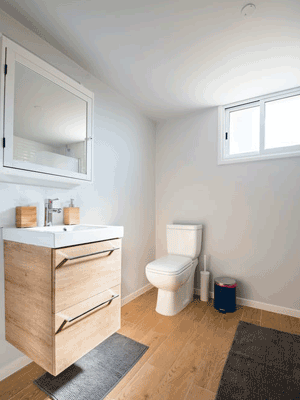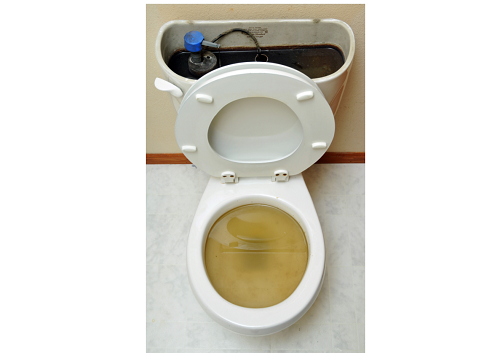Listed here down the page you might get a bunch of quality advice around Reasons Your Toilet Keeps Clogging.

When your bathroom malfunctions as well as clogs up, it is greater than a minor aggravation. A plugged toilet that backflows with filthy water is likewise horrible as well as hazardous to your wellness. Additionally, it interrupts your household totally because everybody needs accessibility to the toilet throughout the day. Luckily, you can still try to remove the obstruction on your own with these handy tips:
How To Unblock the Toilet Without a Plunger
The most effective way to manage a clogged toilet is to make use of a plunger yet there may be scenarios where you don't have access to one. If If the commode is blocked and you do not have a bettor helpful, have no fear. There is more than one method to remove the commode and a few of these means include typical household products that you most likely currently have. If a clog is specific troublesome, you may require to make use of a drain serpent to unblock it. But these natural home remedy will certainly help push with several of the more minor blockages you're most likely to run into.
Use vinegar as well as Sodium bicarbonate
Reliable family staples like vinegar and also cooking soft drink will certainly come in handy. Aside from using them for cooking cleaning surfaces and also working as deodorizers, these two miracle substances can clear blockages well. Most importantly, they are safe as well as will certainly leave your toilet scenting fresh as well as clean. Below's what you require to do:
You may need to duplicate the process a few times till the clog is completely gone. The chain reaction the arise from incorporating these 2 will certainly work well in softening clogs.
Attempt Ordinary Recipe Soap and also Warm Water
Boil one gallon of hot water in your kettle. Next off, put some nice-smelling fluid recipe soap onto your bathroom. When the water boils, pour it very carefully into the commode. Await about 15 minutes for this concoction to function its magic. The warm water as well as soap are expected to soften the clog. Conversely, you can use your shampoo, also. After this treatment, you should have the ability to purge the commode without worries.
Buy a Commode Snake
A toilet serpent is a fairly economical device in your hardware shop. Most importantly, any person can use it, also somebody who isn't a handyman. All you require to do is poke the device in the toilet to unclog it. However, it can obtain truly messy due to the fact that you have to utilize your hands and bend down to get to the blockage.
Obtain a Plunger
The plunger is the primary tool for unclogging commodes. As a matter of fact, every home needs to have one because they work so efficiently. First, make certain you obtain a huge enough dimension to cover the hole in your toilet. Then, position the plunger and also carefully press it down first to remove air. This creates the suction you require to clear the clog. When you have actually got a great seal, you can plunge down forcefully. If you're dealing with filthy water, placed on handwear covers, mask, goggles, as well as put on old clothing in case you obtain sprayed. You might require to pump the bettor numerous times till the obstruction loosens up and the flow is recovered.
Pour Family Bleach and Powdered Soap
Bleach like Clorox does well to break down waste. Simply adhere to the dish soap instructions. Change the soap with 3 cups of bleach. After a couple of mins, pour in powdered soap. Wait on 15 mins and flush the toilet. This blend will certainly aid break down any kind of waste and clear the stopped up commode.
Include Hot Water
If meal soap alone does not do the trick, adding water may move things along. Load a bucket with warm bath water (boiling water could trigger a porcelain bathroom to split) and also put the water into the toilet from midsection level. The force of the water might displace the cause of the obstruction.
Call for Professional Help
While the options over are reputable as well as practical, they might be rather untidy if you have actually got a stubborn obstruction that will not budge. The best thing to do in this instance is to call an expert plumber. They can handle your clogged up toilet and also assess your drainpipe system with a sewage system cam inspection to see if you've got any bigger issues.
How to Unblock a Toilet Easily With These 6 Most Common Ways
Identify the Type of the Blockage
A sign that a blockage is forming is the water draining slowly from the toilet. When you notice this, do not wait for the toilet to become completely obstructed. It is much easier to unblock it early on.
The second type of stoppage is when, after flushing the toilet, the water in the bowl is very little or there is none at all. This means that there is an issue with the air circulation in the waste pipe.
Lastly, there is the complete blockage which is identified by how the water level in the toilet bowl keeps rising towards the brim and does not drain away. If you have this type of obstruction, move as much water as possible from the bowl into a separate bucket and avoid the temptation to flush again, otherwise, you risk having to deal with water spilling everywhere and a much bigger mess.
If you are having trouble identifying the type of blockage, call a plumber to deal with your blocked toilet in London.
Note: A blockage in a toilet macerator or waste outlet needs diagnosing the root of the problem and application of unblocking methods different from those used for standard toilets. Your best bet is to contact a Saniflo plumber who will help you remove the blockage the hassle-free way.
Prepare the area
Place old towels and newspapers around the toilet bowl to protect the floor from any overspill, splashes or drips. Save your best towels for another time. It might be a good idea to have a bucket waiting on standby, should the case to pull up rather than pushing down a blockage arise. Use rubber gloves and wear old clothes to protect yourself.
Prevent overflows
To ensure that no overflowing nightmares happen that day, you will need to turn the shutoff valve. Look for it on the pipe coming off the wall behind the toilet. Turn it clockwise and make sure not to accidentally break it if it is not budging and you use too much strength. You can spray a little penetrating oil on the valve to loosen it.
If that doesn’t work or you have an older toilet that doesn’t have a shutoff valve, deal with either the float or the flapper inside the water tank. Don’t worry, the water inside the tank is the same as the one that comes out of the tap.
The float is the large ball-like or balloon-like element that sinks down when the water level drops and opens the water valve to fill up the tank. You can use something to keep it upright. Alternatively, you can close the flapper. That is the circular drain stopper attached to a chain. Doing either of these three options will prevent water from filling up the tank after you have flushed.
Double-check your plunger
Before proceeding with the plunger, double-check if you can remove the obstruction manually if it is a child’s toy or another object. If that is not the case, then it is time to pick up the plunger. Make sure you are using the correct one: a plunger that has a rubber flange that can fold back up into the suction cup when not in use is for toilets; a plunger without one is for sinks. Using the wrong instrument will make the job more difficult and time-consuming since you won’t have a tight seal around the hole. To make the plunger even more effective, you can soften the rubber by soaking it in hot water for a few minutes.
Before you start plunging, make sure the plunger is submerged in water and it is completely covering the pipe. You can add water from the sink to the toilet bowl to achieve the best results.
It’s time to plunge
Start by slowly and firmly pushing down to create a seal and then pulling up sharply to dislodge the obstruction. When you pick up the pace, you will notice the water starting to drain. It usually takes at least 15 minutes to unclog a toilet.
When draining, some water may dislodge and push forward the blockage. If it doesn’t, then fill up the toilet bowl with water to its usual level again and repeat the process. Some stubborn clogs containing hair or wet wipes may require a couple of rounds of plunging.
Clean your tools
Once you are done, it is important to give your tool a good clean. The best way is to pour some bleach and washing liquid into the toilet bowl and swirl the plunger for a few minutes in the mixture. Then rinse it by flushing the toilet twice. This will also help move the blockage forward.
Unclog Your Loo with a Drain Auger
A toilet auger (also known as a closet auger, drain auger and plumber’s snake) is essentially a long, flexible cable, which has a handle on one end and a corkscrew-shaped tip on the other. It also has a rubber covering that protects the toilet bowl from scratches. Follow these steps to find out how to unclog a toilet with a snake:
Insert the cable into the toilet
Start by inserting the auger into the toilet and positioning the curved part of the instrument at the curved part of the toilet bowl. If you can still see the cable, then you need to push the auger further in.
Rotate the handle until the blockage is clear
Hold the auger housing in one hand and rotate the handle slowly with the other. Make sure you don’t use too much force as this could backfire and make the cable coil back. Turn the handle patiently in one direction until you get some resistance. When you feel like it cannot go any further, then it is safe to assume that you have reached the blockage.
If the cork-screw tip perforates the blockage, you can pull the cable out along with the obstruction. Alternatively, the tip can break the obstruction into smaller pieces, which can then be flushed away safely.
Get the cable out
If the cable can go in deeper than before and there is no resistance anymore, pull it out by rotating in the opposite direction.

Hopefully you liked our post on How to Unclog a Toilet . Thanks a lot for taking a few minutes to read through our content. Do you know about somebody else who is inquisitive about the topic? Why not promote it. Thanks so much for your time spent reading it.
No more leaks, call us!